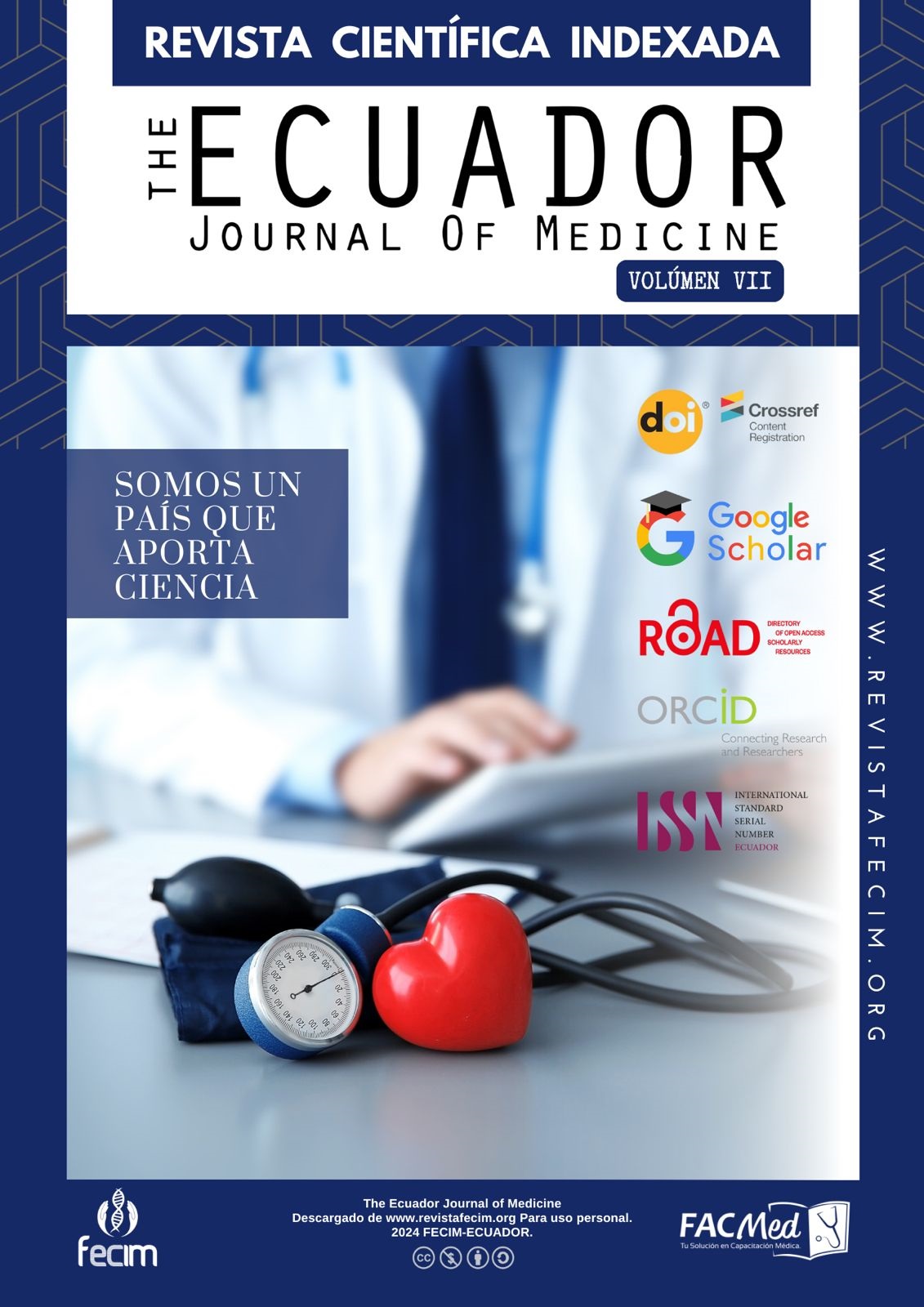SUPRAVENTRICULAR TACHYCARDIA IN THE NEWBORN
DOI:
https://doi.org/10.46721/tejom-vol7iss1-2024-46-54Keywords:
Supraventricular Tachycardia, Newborn, Adenosine, Cardiology, Cardiac ArrhythmiasAbstract
Abstract
The purpose of this article is to describe and guide the management of supraventricular tachycardia by presenting a clinical case of a newborn. Despite
being one of the most common cardiac pathologies, its management is poorly described, and in most cases, these conditions go unnoticed.
Introduction: Supraventricular tachycardia is described as the most common arrhythmia in the neonatal period. However, the literature is unclear about its management and incidence. There is much discrepancy regarding these data, which vary between sources, most referring to an incidence of 1.2 cases per 1,000 live newborns. It is described as a casual finding or associated with added
complications, with its main sign being a heart rate greater than 200 beats per minute at rest.
Case Report: We present the case of an early term newborn at 38.1 weeks of gestation, with prenatal history of a mother with vitiligo on her hands for the
past 10 years. The mother had 8 prenatal visits and 8 ultrasounds, all with normal results. No urinary or vaginal infections were reported. At birth, the
physical examination showed an Apgar score of 9/9, with a birth weight of 2440 g, height of 45 cm, and head circumference of 33 cm. Although classified as low birth weight, it was appropriate for gestational age. The newborn presented a good general appearance, pink skin, tachypnea with 64 breaths per minute, mild subcostal retraction, and a heart rate higher than 280 beats per minute, with an
oxygen saturation of 90% in room air.
After 10 minutes of life, the newborn’s general condition worsened, with coldness, generalized pallor, continued tachycardia with a heart rate of 280 bpm, irritability, and a whine audible from a distance. No heart murmurs were auscultated, and air entry at the pulmonary level was adequate. Due to the rapid deterioration, handmade CPAP was applied, and the newborn was transferred to
the neonatology service for comprehensive management.
Discussion: Initial patient management consisted of applying physical measures recommended in the literature, such as cold water compresses on the face, and progressively administering pharmacological treatments like adenosine, since
favorable responses were not obtained at the start of treatment. The lack of standardized protocols in our country makes these procedures challenging.
Currently, the newborn is being followed up on an outpatient basis.
Conclusions: In this case, we recommend developing management protocols for patients with this type of pathology in healthcare units or adopting international updates. The absence of defined procedures delays timely treatment. As the
literature suggests, most cases are incidental findings or occur months later due to added complications. Not all patients require hospitalization or present immediate health deterioration.
Downloads
Published
Issue
Section
License
Copyright (c) 2024 Jorge Alexander Sandoval Guijarro, Juan Carlos Núñez Figueroa, Miguel José Rojas Andrade

This work is licensed under a Creative Commons Attribution-NonCommercial-ShareAlike 4.0 International License.





